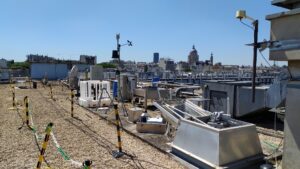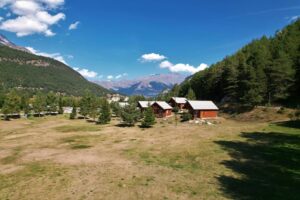Warmer winter temperatures brought forward the growing season, leaving crops more vulnerable to frost
Climate change increased the likelihood of damaging frosts from the French April 2021 cold wave by about 60%
Between 6 and 8 April 2021 an intense late frost episode damaged agricultural lands in France. Vineyards in particular were severely affected, with early assessments estimating losses of almost 2 billion euros. The cold wave hit France after the country experienced record high temperatures in March.
Now, a group of researchers has quantified the role that human-caused climate change played in the event. Their analysis focused on an area in central France well known for its grapevines, encompassing Champagne, the Loire Valley and Burgundy. The results show that while global warming made the cold wave less likely, it also made bud burst happen earlier in the year. During the bud burst stage, vineyards are especially susceptible to frosts. The researchers concluded that overall, human-caused climate change made the damaging frost event about 60% more likely.
The research is part of the World Weather Attribution initiative and was conducted by an international group of scientists from the Institut Pierre-Simon Laplace (from the French National Centre for Scientific Research and the Alternative Energies and Atomic Energy Commission), the Royal Netherlands Meteorological Institute, the University of Oxford, the Max Planck Institute for Biogeochemistry Jena, and Météo-France.
Two opposite effects
To evaluate and quantify the effect of climate change, the researchers compared climate models that include human-caused global warming with those that don’t include it. These models show that climate change made the 2021 April cold wave less likely. The lowest temperatures between April and July have increased by 1.2ºC in the region studied due to human-caused climate change. And cold frost episodes, which would happen once every 10 years without climate change, now have a return period of approximately 160 years.
But because winters are now warmer, the growing season is happening earlier in the year, exposing the vines to lower temperatures. This was estimated using a metric called Growing Degree Days (GDD), which is commonly used by farmers to measure the maturity of their crops. GDD is obtained by adding daily average temperatures. It reflects how much heat has been accumulated by the plants throughout the growing season and can be used to estimate maturation stages. Optimal GDDs for each growth stage vary amongst species and strains. A typical GDD value for the beginning of the growing season in the region studied sits between 250°C to 350°C.
When the researchers calculated the minimum temperatures in place when GDD crosses the 250ºC threshold, they observed they had decreased by an average of 2.0ºC due to climate change. The period when GDD is between 250ºC and 350ºC is also cooler now, with minimum temperatures also on average 2.0ºC lower.
So while temperatures have overall increased over the last decades, GDD values show that crops are maturing earlier in the year, leaving them more exposed and vulnerable to low temperatures.
| “Our study is a good example of the fact that climate change affects the whole climate system. But different components, with different magnitudes and rates of change, lead to threats that can be unexpected and go beyond heatwaves, droughts and floods.”
Friederike Otto, Associate Director at the Environmental Change Institute, University of Oxford |
| “Global warming is affecting the way plants and animals behave. Understanding these changes is critical to protect our biodiversity and build resilient food systems.”
“If climate change gets worse, these changes will worsen too. This will create challenges for farmers, the wine industry, and wine lovers everywhere.” Nicolas Viovy, Senior scientist at the Atomic Energy and alternative energies Commission (CEA) and the Institut Pierre-Simon Laplace |
| “There is an apparent paradox: global warming can lead to increased frost damage! Our results show that climate change is making both the growing season start earlier and frosts become warmer, but the former effect dominates over the latter. The consequence is that vineyards grow and mature faster now, but this leaves them more exposed to eventual colder snaps.”
Robert Vautard, Senior scientist at the French National Centre for Scientific Research (CNRS) and director of the Institut Pierre-Simon Laplace |






